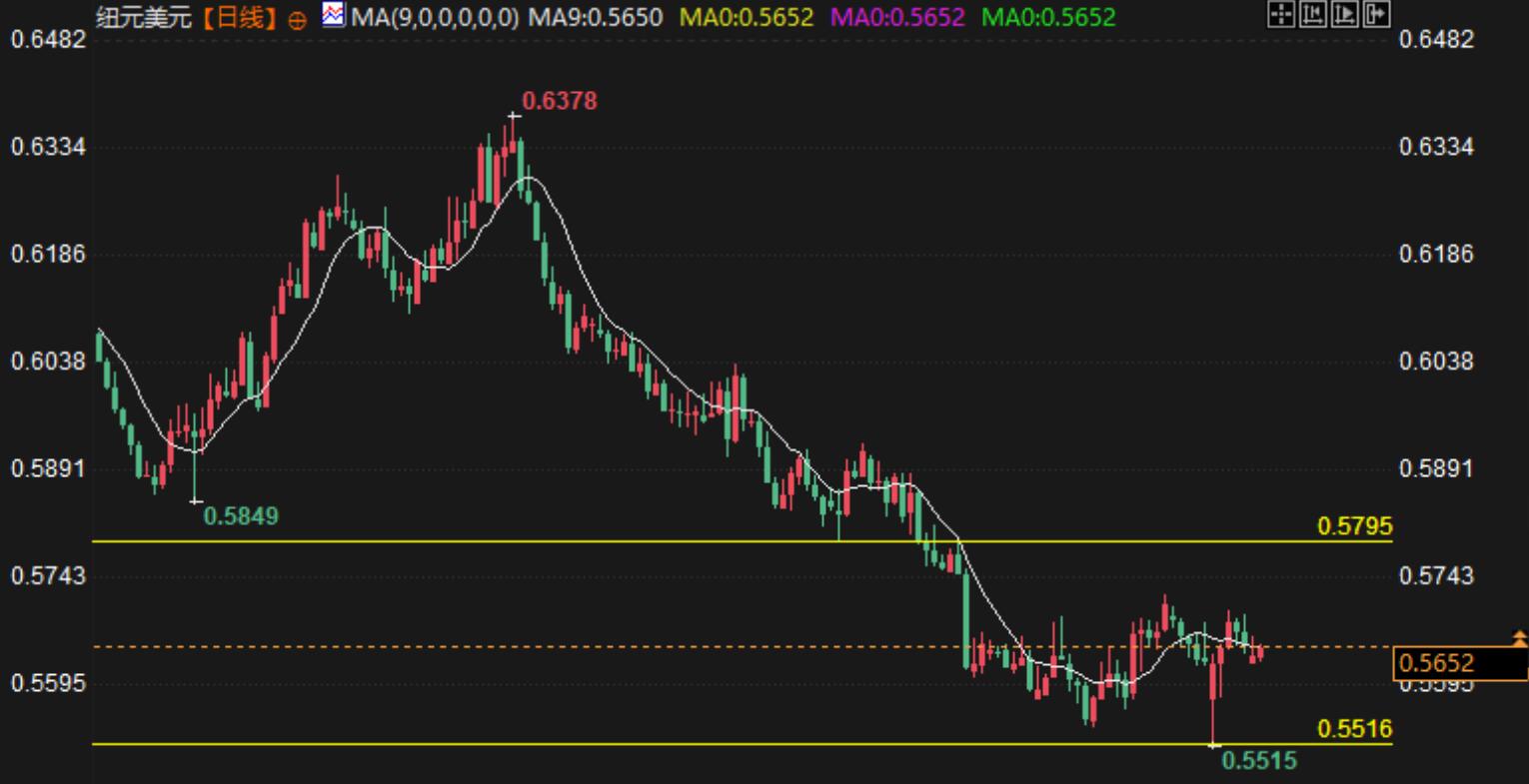Forex trading analysis: NZD/USD is under short-term pressure from technical resistance levels
On Tuesday (February 11th), the New Zealand dollar against the US dollar (NZD/USD) tested the resistance level of the nine day moving average (EMA) near 0.5650, and the latest report was 0.5648, up 0.16% for the day. After three consecutive days of decline, the New Zealand dollar is trying to determine its future trend against the US dollar, but from technical indicators, the market is showing mixed signals. This article will analyze the key factors affecting the exchange rate of the New Zealand dollar against the US dollar, with a focus on current market trends and future prospects.
At present, the exchange rate of the New Zealand dollar against the US dollar is in the consolidation stage, and the long-term direction of the currency pair between buyers and sellers is not yet clear. The price fluctuates within a rectangular range, with the lower boundary of the current range being approximately 0.5550 and the upper boundary approaching 0.5810. This consolidation stage reflects the uncertainty of the market, especially the lack of clear upward momentum in the short term. Despite the recent rebound of the New Zealand dollar, overall market sentiment remains cautious and lacks sufficient catalyst to push the exchange rate further up.
In terms of global risk sentiment, although there has been a certain rebound in the market in the short term, the driving force for this rebound is limited to situations with significant technical pressure. Therefore, traders pay more attention to whether prices will break through the current range, rather than following any macro level stimulus factors.
Technical analysis: Short term trend pressure
From a technical perspective, the current maximum resistance level for the New Zealand dollar against the US dollar is the nine day moving average (EMA), which is located around 0.5654. This technical indicator has become a bottleneck for exchange rate appreciation, and the current exchange rate has not yet broken through this key resistance level, resulting in limited upward momentum in the short term. In addition, the relative strength index (RSI) on the 14th was slightly below the 50 level, further exacerbating the bearish bias in the market, indicating that selling pressure still dominates and suppresses further price increases.
The current key support level is around 0.5650, and once the exchange rate falls below this level, it may accelerate the downward trend, testing the lower boundary of the rectangular range at 0.5550. If the price further declines, the next support level will be 0.5516, which is the lowest point since October 2022 and was touched on February 3, 2025, making it the next target for bears.
However, if NZD/USD can break through the nine day EMA resistance of 0.5654, the short-term price momentum may be boosted, and the exchange rate is expected to challenge the previous nine week high of 0.5794 (reached on January 24th). Afterwards, the psychological barrier of 0.5800 may provide further resistance, followed closely by the upper boundary of the rectangular interval of 0.5810. If the price breaks through these technological levels, there may be a stronger upward trend.
Support and Resistance Levels
-Key support level: 0.5650. This is the current key support level, and once breached, it may lead to further price declines to 0.5550 and 0.5516.
-Key resistance level: 0.5654 (9-day EMA). If the price breaks through this level, it may bring a short-term rebound, challenging the nine week high of 0.5794.
-Organize the upper boundary of the interval: 0.5810. Once it breaks through this level, it may mean that the short-term trend will turn upward.

Outlook and Market Sentiment
Looking ahead, the trend of the New Zealand dollar against the US dollar remains uncertain, with prices oscillating between support and resistance, and no clear direction for a breakthrough in the short term. If the price falls below the support level of 0.5650, it may accelerate the downward search for support areas of 0.5550 and 0.5516; On the contrary, if the resistance level of 0.5654 is breached, a rebound may occur in the short term, challenging the high point of 0.5794 and potentially reaching the psychological barriers of 0.5800 and 0.5810.
Therefore, traders should closely monitor the breakthrough of these technical key levels, which will determine the subsequent trend of the exchange rate. The current market sentiment remains cautious, and the direction in the short term still needs to be further confirmed. Only after breaking through the support or resistance level of the current range can the price develop new trends.
Overall, the exchange rate of the New Zealand dollar against the US dollar is still in the consolidation stage. Although there is some downward pressure in the short term, if it successfully breaks through technical resistance, there may be a rebound. The next trading day will determine whether the currency pair can break through the current range and start a new trend.
Tips:This page came from Internet, which is not standing for FXCUE opinions of this website.
Statement:Contact us if the content violates the law or your rights
